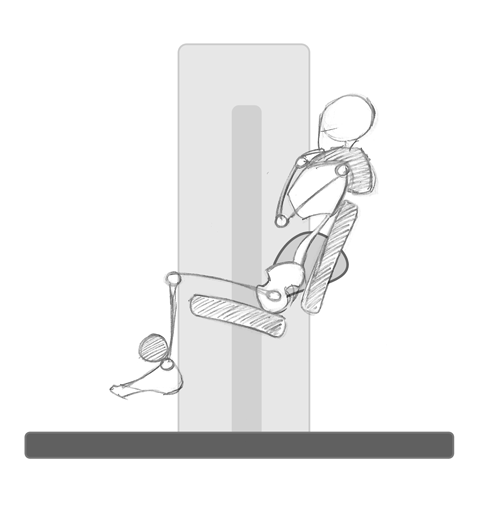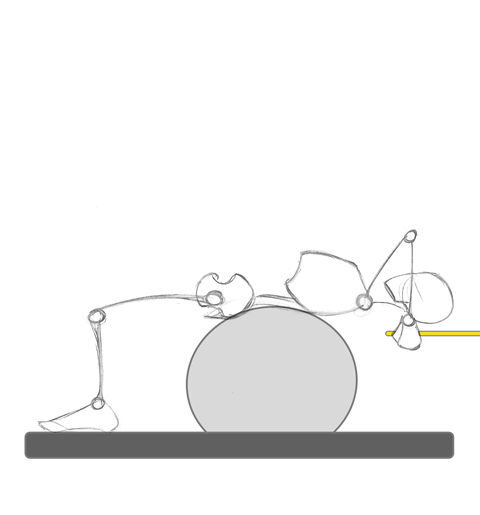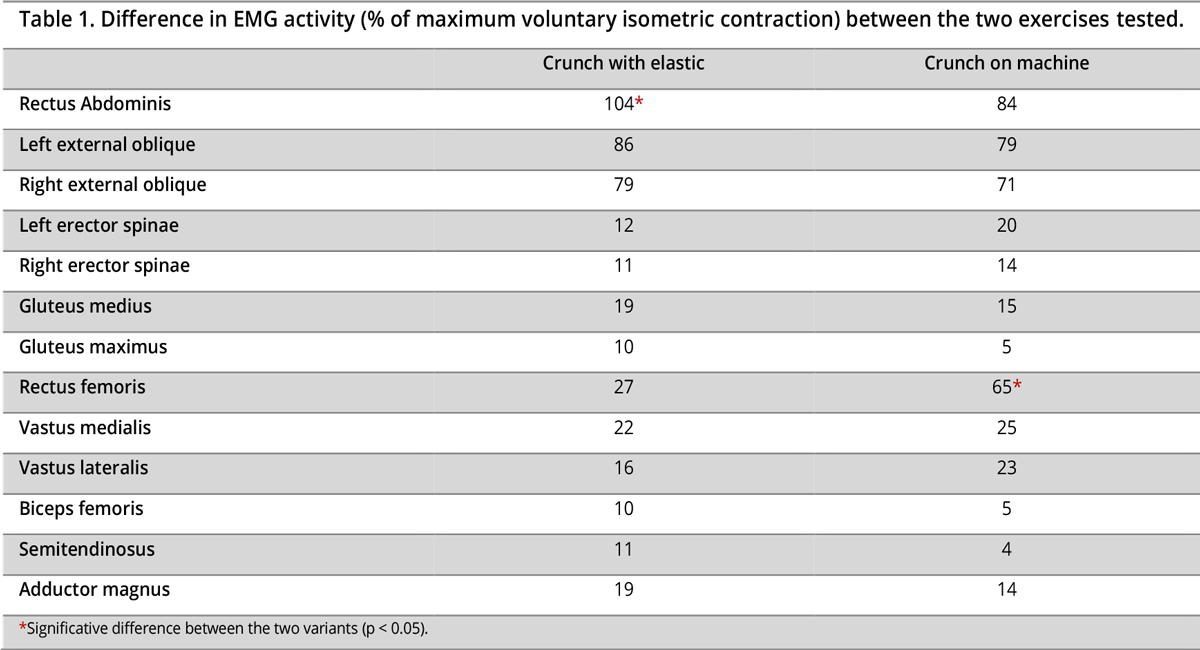
During the various tasks that we carry out on a daily basis, the stabilization of the spine is ensured by the muscles of the trunk. The muscles responsible for this stability are classified into two categories: the local muscles, such as the transverse and multifidus muscles, which are responsible for generating the force necessary to provide inter-segmental stability, and the global muscles, such as the rectus abdominis and erector spinae which are involved in spinal movement and in the control of external forces acting on the spine.
An inadequate strength of these muscles, that is, too weak, which can lead to a decrease in the stability of the spine and in the control of mobility, could lead to pain in the lumbar area. This is why, it is generally advised to strengthen the abdominal muscles, and thus to increase the stability of the spine and to decrease the shearing forces which would act on the level of the lumbar vertebrae, to preserve a balanced spine and good posture.
For this, one of the most used exercises is the crunch. It can be executed without any resistance, or on a machine with an adjustable resistance. It is also possible to add a balance and stability component to this exercise by doing it on Swiss Ball. And to increase the intensity of this exercise, it could be interesting to add an elastic resistance. But will the muscular activation of the abdominal muscles be equivalent to that observed on a machine?
To answer this question, Danish researchers compared the electromyographic activity (EMG) of different muscles of the abdominal cavity and thigh during two variants of the crunch exercise: on a machine with gravitational resistance (Fig. 1) and on swiss ball with elastic resistance (Fig. 2). To do this, the researchers recruited 42 sedentary people, 24 women and 18 men, aged 28 to 67 years.

Figure 1. Crunch with machine.

Figure 2. Crunch with elastic band.
For this protocol, all participants evaluated their 10RM on each of the two exercises. For the tests, each of them had to perform 3 consecutive repetitions with the load of 10RM at a controlled rate (~1.5 s in the concentric phase and ~1.5 s in the eccentric phase). In addition, during the exercise, the EMG activity of 13 muscles was measured (rectus abdominis, right and left external obliques, right and left erector spinae, gluteus medius and maximus, rectus femoris, vastus medialis and lateralis, adductor magnus, biceps femoris and semitendinosus.
Table 1 presents the results of the EMG activity of the 13 muscles studied during the two variants of the crunch exercise. The main result of this study shows that crunch on Swiss Ball with an elastic band places more strain on the abs than when crunching on a machine. On the other hand, on a machine, the flexion position of the hips and the fact that the feet are blocked lead to a significantly higher recruitment of the rectus femoris.

Crunch on Swiss Ball has generally little impact on the EMG activity of the abs muscles. According to studies, EMG activity is between 30 and 60% of the maximum voluntary isometric contraction, i.e. very weak stimulation. The addition of an elastic resistance to crunch on Swiss Ball allows on the contrary to optimize muscle recruitment while minimizing the participation of hip flexors. Too much activity of the hip flexors, such as the rectus femoris and psoas-iliac muscles, can be harmful for people with lower back pain. In fact, an increase in the activity of these muscles could lead to an anteversion of the pelvis, increasing lumbar lordosis, and potentially shear forces at the level of the lumbar vertebrae. In the light of the results of this study, it is therefore preferable to perform flexion of the trunk with a hip extension as high as possible.
The comparison of these two exercises shows that they make it possible to exercise the rectus abdominis muscle, at a level sufficient to cause neuro-muscular adaptations. However, the position adopted during the machine crunch implies a strong recruitment of the rectus femoris, hip flexor. This high demand can be harmful for people suffering from the lower back, and could induce these pains in the medium and long term in healthy people. In this case, the version of the crunch on swiss ball with elastic resistance seems the best adapted, while allowing a significantly higher recruitment of the rectus abdominis.
It is interesting to note that the work on Swiss Ball did not induce superior EMG activities for the other muscles of the abdominal cavity. Considered as an unstable surface, the Swiss Ball is supposed to allow a higher stress of the muscles to stabilize the body during an exercise. The weight of the body and the position of the feet may provide greater stability and secure the Swiss Ball. Finally, if the strengthening of the abdominal muscles as a whole can be beneficial for the stability of the spine and the reduction of low back pain, it is important to consider jointly the strengthening of local muscles (ie, transverse and multifidus), in order not to create functional imbalance. In other words, it is necessary that the local muscles can control the force generated by the global muscles.
We remind you that you can quote articles by limiting your quotation to 200 words maximum and you must include a nominative link to this one. Any other use, especially copying in full on forum, website or any other content, is strictly prohibited. In doubt, contact us.
Copyright © 2011-2024 - www.sci-sport.com - All rights reserved